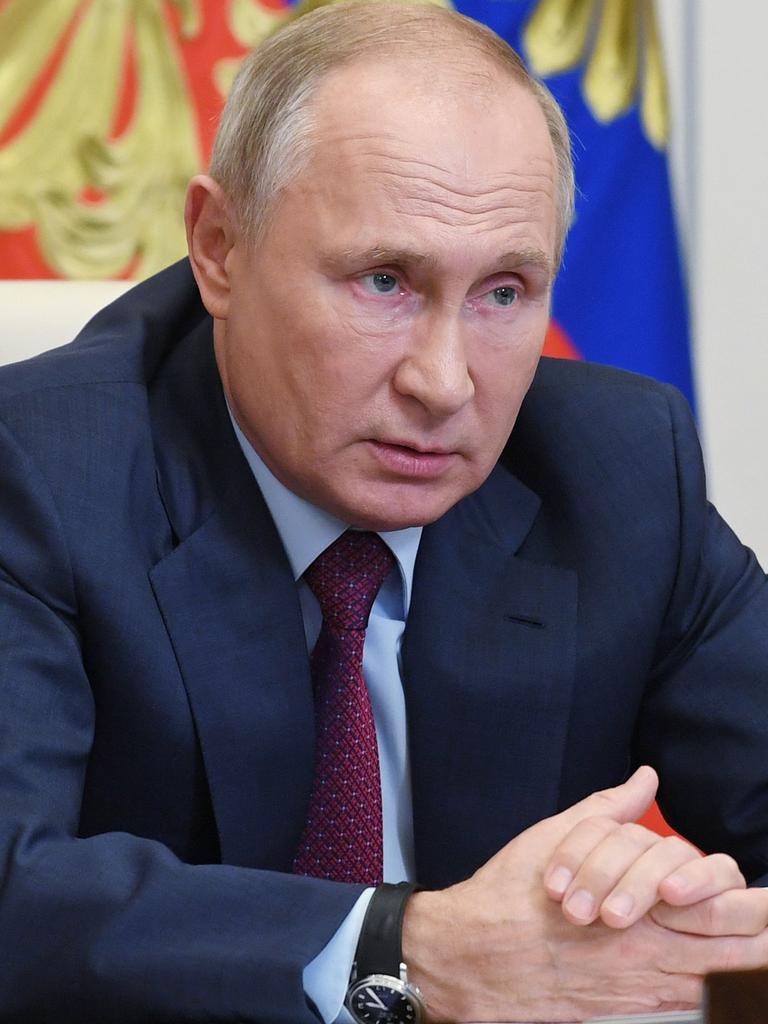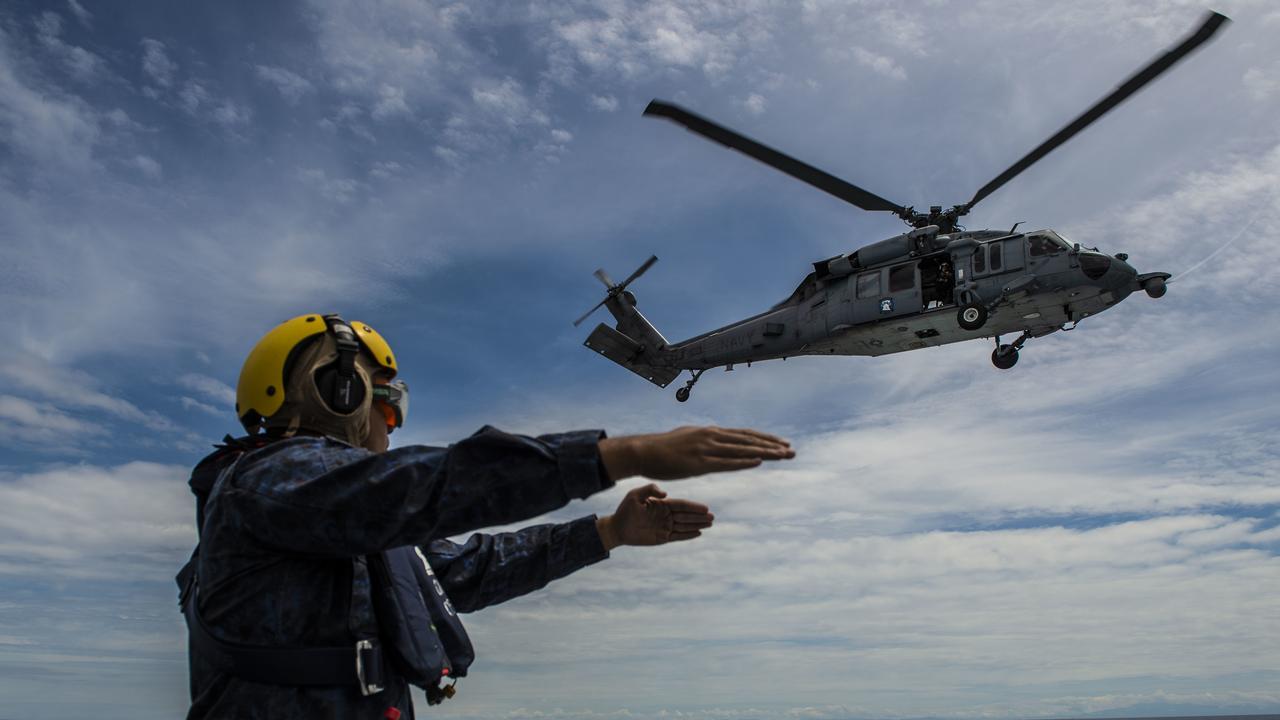Top US Admiral warns threat of nuclear war from Russia and China a ‘real possibility’
A top US admiral has warned “nuclear employment is a very real possibility” when dealing with threats from Russia and China.
A top US admiral has called on the nation’s leaders to seek new ways to face threats by Russia and China, including the “real possibility” of nuclear conflict.
Admiral Charles Richard, who heads the US Strategic Command – which is responsible for nuclear deterrence – warned that Moscow and Beijing have “begun to aggressively challenge international norms” in “ways not seen since the height of the Cold War”.
“There is a real possibility that a regional crisis with Russia or China could escalate quickly to a conflict involving nuclear weapons, if they perceived a conventional loss would threaten the regime or state,” he wrote in the February issue of Proceedings, the US Naval Institute’s monthly magazine.
“Consequently, the US military must shift its principal assumption from ‘nuclear employment is not possible’ to ‘nuclear employment is a very real possibility,’ and act to meet and deter that reality.”

He said: “We cannot approach nuclear deterrence the same way. It must be tailored and evolved for the dynamic environment we face.
“At the US Strategic Command, we assess the probability of nuclear use is low, but not ‘impossible,’ particularly in a crisis and as our nuclear-armed adversaries continue to build capability and exert themselves globally,” he wrote.
In his blunt assessment of the geopolitical landscape, Admiral Richard also said the US “must wrestle with the relationships among competition, deterrence and assurance”.
“Despite views to the contrary, successful competition does not result in an ‘end state’,” he wrote.
“We must rethink how we assess strategic risks and how those assessments inform our planning and execution. Following our conclusion that crisis or conflict with a nuclear-armed adversary could lead to nuclear employment, US Strategic Command embarked on a revised ‘Risk of Strategic Deterrence Failure’ assessment process to better inform our own thinking.”


The Admiral said: “[The Defence Department] must reframe how it prioritises the procurement of future capabilities. Our record in this regard is not stellar.”
He added: “We must ensure that all of our capabilities map to an overarching strategy.”
The navy officer said the US “must acknowledge the foundational nature of our nation’s strategic nuclear forces, as they create the ‘manoeuvre space’ for us to project conventional military power strategically”.
He expressed his alarm at a spike in “cyber attacks and threats in space” by Russia and China, as well as their investment in advanced weaponry, including nuclear weapons.

“Not surprisingly, they are even taking advantage of the global pandemic to advance their national agendas. These behaviours are destabilising, and if left unchecked, increase the risk of great power crisis or conflict,” he wrote.
“We must actively compete to hold their aggression in check. Ceding to their initiatives risks reinforcing their perceptions that the United States is unwilling or unable to respond, which could further embolden them,” Admiral Richard continued.
“Additionally, our allies may interpret inaction as an unwillingness or inability to lead. Remaining passive may deny us opportunities to position in ways that underpin one of our greatest strengths – strategic power projection.”
He said he bristles when he hears the Defence Department being accused of “being stuck in the Cold War”.
“The department is well past the Cold War; in fact, a large part of our challenge lies in the fact that we no longer view our environment through the lens of potential enemy nuclear employment,” he wrote.
“The United States has sustained global counter-terrorism efforts for two decades – and has grown accustomed to ignoring the nuclear dimension. Our recent experiences against non-nuclear-armed adversaries have allowed us to believe nuclear use is impossible and not worthy of attention,” Admiral Richard said.

“Further, assessing risk is more than just assessing likelihood; it also involves accounting for outcomes. We cannot dismiss or ignore events that currently appear unlikely but, should they occur, would have catastrophic consequences,” he said.
He warned that the nuclear capabilities of the US adversaries are “sobering”.
“More than a decade ago, Russia began aggressively modernising its nuclear forces, including its non-treaty-accountable medium- and short-range systems,” he wrote.
“It is modernising bombers, intercontinental ballistic missiles (ICBMs), submarine-launched ballistic missiles (SLBMs), nuclear-powered ballistic missile submarines, warning systems, command-and-control (C2) capabilities, and the doctrine to underpin their employment – in short, its entire strategic force structure,” he wrote.
“This modernisation is about 70 per cent complete and on track to be fully realised in a few years. In addition, Russia is building new and novel systems, such as hypersonic glide vehicles, nuclear-armed and nuclear-powered torpedoes and cruise missiles, and other capabilities,” he said.
Admiral Richard noted that “until we come to a broad understanding of what the threat is and what to do about it, we risk suffering embarrassment – or perhaps worse – at the hands of our adversaries.”
This article was first published by the New York Post and is reproduced with permission



